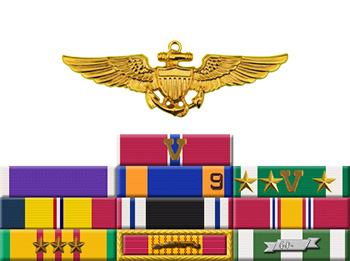
|
Carl T. Wieland |
 |
|||
| Rank, Service | ||||
Lieutenant O-3, U.S. Navy |
||||
| Veteran of: | ||||
|
||||
| Tribute: | ||||
Carl Wieland was born on November 25, 1946, in Orlando, Florida. He entered the Naval Aviation Reserve Officer Candidate Program in May 1966, and was commissioned an Ensign in the U.S. Navy after completing his bachelor's degree on July 15, 1968. Ens Wieland next completed flight training and was designated a Naval Aviator in September 1969, followed by A-7 Corsair II Replacement Air Group training with VA-174 at NAS Cecil Field, Florida, from October 1969 to September 1970. He served as an A-7 pilot with VA-82 at MCAS Beaufort, South Carolina, from September 1970 to June 1972, and then deployed to Southeast Asia aboard the aircraft carrier USS America (CV-66) from June 1972 until he was forced to eject over North Vietnam and was taken as a Prisoner of War on December 20, 1972. After spending 100 days in captivity, LT Wieland was released during Operation Homecoming on March 29, 1973. He was briefly hospitalized to recover from his injuries, and then returned to flying status as an A-7 pilot back with VA-82 one month later, making him the first repatriated Vietnam Prisoner of War to return to operational flying status. LT Wieland left active duty on September 4, 1973, and later earned his law degree from Samford University's Cumberland School of Law in Birmingham, Alabama. He practiced industrial law with Markel, McDonough and O'Neal in Orlando, Florida, until he was murdered at a motel in Atlanta, Georgia, on June 12, 1986. Carl Wieland is buried at Saint Albans Anglican Cathedral Memorial Garden in Oviedo, Florida. |
||||
|
||||

